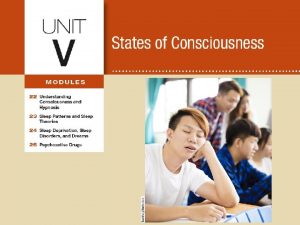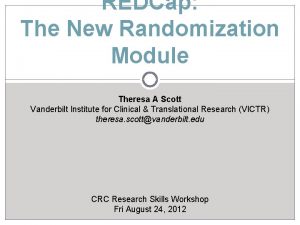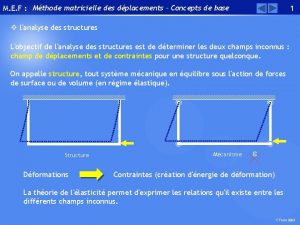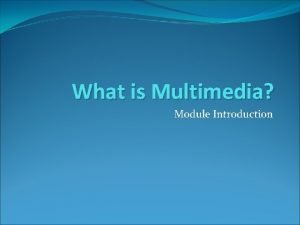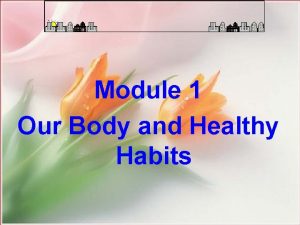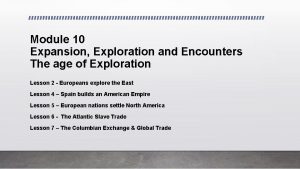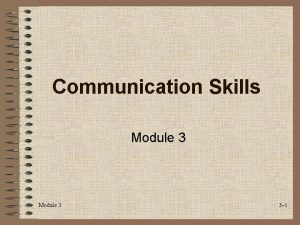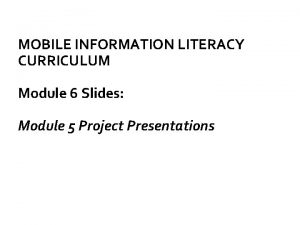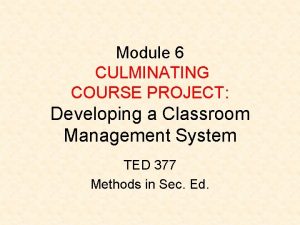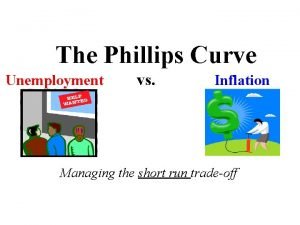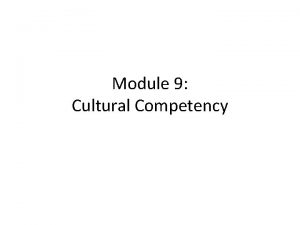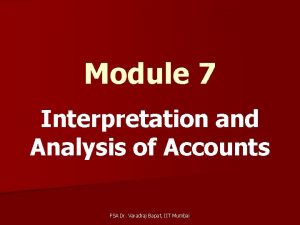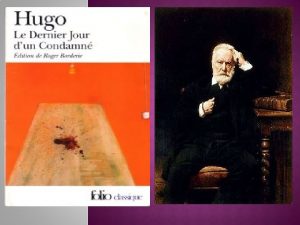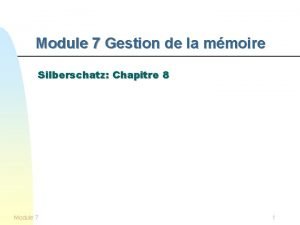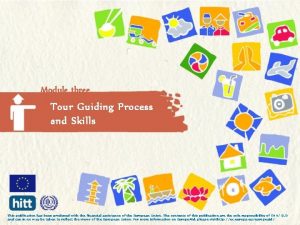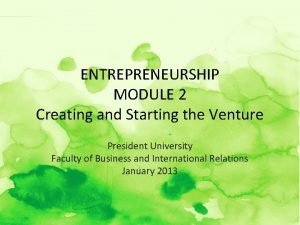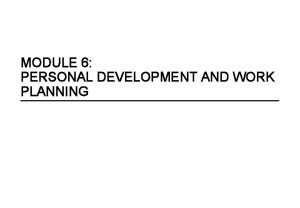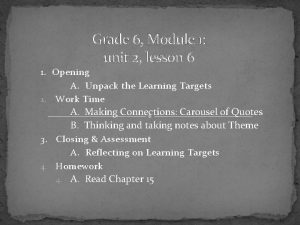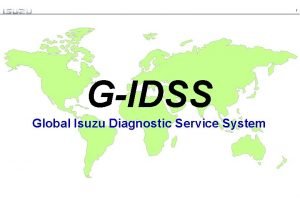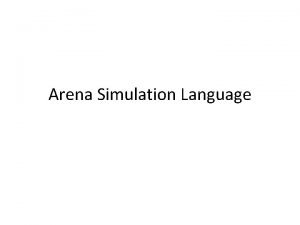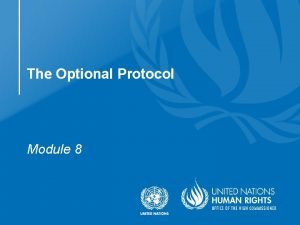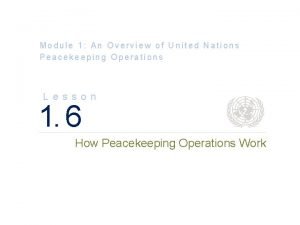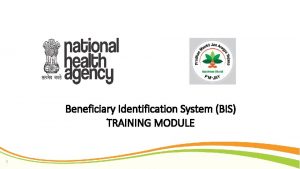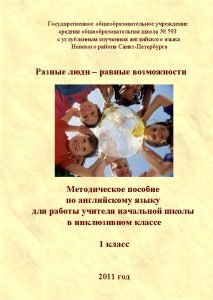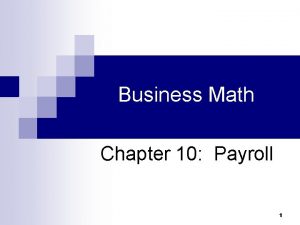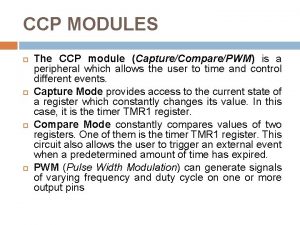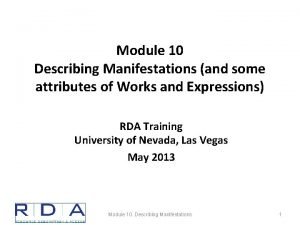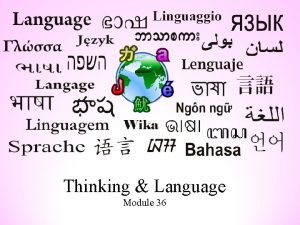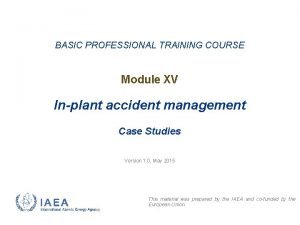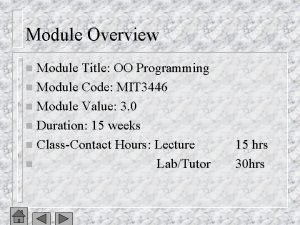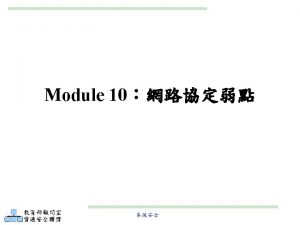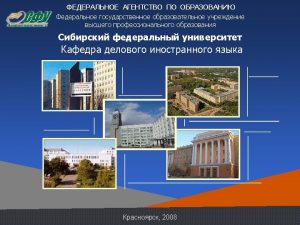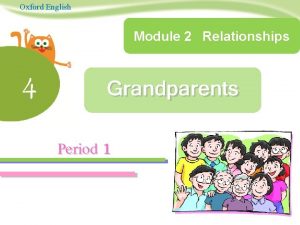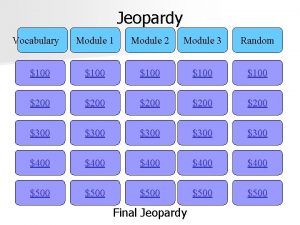1 Module 1 2 Module 2 3 Module




















































































































- Slides: 116




Оглавление 1. Module 1 2. Module 2 3. Module 3 Красноярск, 2008 4


Culture Historically, the word derives from the Latin word ‘colere’, which could be translated as ‘to build’, ‘to care for’, ‘to plant’ or ‘to cultivate’. Spencer Oatey (2000) proposed the following definition: Culture is a fuzzy set of attitudes, beliefs, behavioural norms, and basic assumptions and values that are shared by a group of people, and that influence each member's behaviour and his/her interpretations of the "meaning" of other people's behaviour. Hall (1983) views culture as often subconscious: “Culture has always dictated where to draw the line separating one thing from another. In the West a line is drawn between normal sex and rape, whereas in the Arab world is much more difficult, for a variety of reasons, to separate these two events. ” Module 1 6

Culture Hofstede (1994) defined culture as “the collective programming of the mind which distinguishes the member of one group or category of people from another” Kroeber & Kluckhohn definition of culture reads ‘Culture consists of patterns, explicit and implicit, of and for behaviour acquired and transmitted by symbols, constituting the distinctive achievements of human groups, including their embodiment in artifacts; …’ the essential core of culture consists of traditional (i. e. historically derived and selected) ideas and especially their attached values; culture systems. products of action conditional elements of future action’ Concluding, we can say that ‘culture’ consists of various factors that are shared by a given group, and that it acts as an interpretive frame of behaviour. Module 1 7

"What is culture? How can it be defined and what does it do? " Quotations • O Mankind, We created you from a single (pair) of a male and a female and made you into nations and tribes, that you may know each other. The Quran, 49: 13 • Culture is a thin but very important veneer that you must be careful not to scratch. People from different cultures are basically the same and respond in the same way. However, make sure that you understand their basic customs and show an interest and willingness to learn the differences between your cultures. Mike Wills • Culture is the way in which a group of people solves problems and reconciles dilemmas. E. Schein • Culture is the fabric of meaning in terms of which human beings interpret their experience and guide their action. Clifford Geertz Module 1 8

"What is culture? How can it be defined and what does it do? " Quotations • I do not want my house to be walled in on all sides and my windows to be stuffed. I want the cultures of all the lands to be blown about my house as freely as possible. But I refuse to be blown off my feet by any. Mahatma Gandhi • Culture is a little like dropping an Alka Seltzer into a glass you don't see it, but somehow it does something. Hans Magnus Enzensberger • If man is to survive, he will have learned to take a delight in the essential differences between men and between cultures. He will learn that differences in ideas and attitudes are a delight, part of life's exciting variety, not something to fear. Gene Roddenberry • On a group of theories one can found a school; but on a group of values one can found a culture, a civilization, a new way of living together among men. Ignazio Silone Module 1 9

"What is culture? How can it be defined and what does it do? " Quotations • A culture may be conceived as a network of beliefs and purposes in which any string in the net pulls and is pulled by the others, thus perpetually changing the configuration of the whole. Jacques Barzun • Culture is the name for what people are interested in, their thoughts, their models, the books they read and the speeches they hear, their table talk, gossip, controversies, historical sense and scientific training, the values they appreciate, the quality of life they admire. All communities have a culture. It is the climate of their civilization. Walter Lippmann • Culture means control over nature. Johan Huizinga • Culture is roughly anything we do and the monkeys don't. Lord Raglan Module 1 10

Types of culture ● CORPORATE CULTURE (for example, the culture of Microsoft) ● PROFESSIONAL CULTURE (for example, the culture of lawyers or doctors) ● GENDER CULTURE (for example, the different cultures of men and women) ● AGE CULTURE (for example, the culture of young, middle aged, and old people) ● RELIGIOUS CULTURE (for example, Catholicsm, Islam) ● REGIONAL CULTURE (for example, Northern and Southern Italy) ● CLASS CULTURE (for example, working class, middle class, and upper class) factors that bind people together Module 1 11

Types of culture • intracultural The term intracultural is used to describe data and interactional data from within one cultural group. For example: Value variations among Germans is intracultural. • intercultural The term intercultural is generally used to describe comparative data and studies of a large number of cultures, or studies that try to identify dimensions that are not culture specific. For example: Hofstede's work is intercultural, as it desribes cultural dimensions applicable for all cultures. Intercultural is also used to describe interactional data from members of different cultural backgrounds (normally more than two). Module 1 12

‘The Culture Onion’ Module 1 13

Iceberg Model Arts Food Games Music Language Tempo of Work Incentives to Work Policies to Work Body Language Appearance Use of Time Notions of Leadership Problem Solving Approaches Superior/Subordinate Rules of Hierarch Relationship Notions of Responsibility Status Concept of Past and Age/Sex/Occupation/Kinship Future Module 1 14

CULTURAL DIMENSIONS BUSINESS COMMUNICATION • • • • Non verbal communication Communication style Time and space Power The individual and the group Uncertainty Nature Module 1 Managing people Negotiating Socializing Giving presentations Advertising Applying for a job 15

Hofstede Geert Hofstede, the Dutch social psychologist and engineer, collected data from employees of IBM in the late 1960 s and early 1970 s. His database cover ed employees working in 72 of the company's national subsidiaries, who fol lowed 38 different occupations, and spoke 20 languages. More than 116, 000 questionnaires were distributed, each with over 100 questions. Hofstede published his findings in 1980 in a groundbreaking book called Culture's Consequences, which has had an enormous influence on the further develop ment of the field. Module 1 16

Hofstede He identified four dimensions: 1. 2. 3. 4. individualism/collectivism uncertainty avoidance power distance masculinity/femininity Hofstede later extended his work to include a fifth dimension: LONG TERM ORIENTATION. Although generally highly respected, his work has been criti cized for concentrating too much on national cultures. Module 1 17

Individualist and Collectivist cultures Individualist cultures stress self realization, whereas collectivist ones require that the individual fits into the group. The collectivist idea is illustrated by the Japanese saying 'The nail that stands out must be hammered down'. In indi vidualist cultures, people look after themselves and their immediate family, whereas in collectivist ones they look after a wider group, in exchange for loyalty. Module 1 18

Individualist and Collectivist cultures tend to have the following features: • identity is based on the social network to which you belong • harmony should be maintained • communication is high context • employer—employee relationships are like a family link • decisions on employing people take the group into account • management is management of groups • relationship is more important than task. (Adapted from Hofstede 1991: 67) Module 1 19

Individualist and Collectivist cultures Individualist cultures stress self realization, whereas collectivist ones require that the individual fits into the group. The collectivist idea is illustrated by the Japanese saying 'The nail that stands out must be hammered down'. In individualist cultures, people look after themselves and their immediate family, hereas in collectivist ones they look after a wider group, in exchange for loyalty. Module 1 20

Individualist and Collectivist cultures Individualist cultures tend to have the following features: • • identity is based on the individual honest people speak their mind communication is low context employer employee relationships are based on a contract • decisions to employ people take skills into account • management is management of individuals • task is more important than relationship. (Adapted from Hofstede 1991: 67) Module 1 21

The Power Distance Index (PDI) is one of the five intercultural dimensions developed by Hofstede. This cultural dimension looks at how much a culture does or does not value hierarchical relationships and respect for authority. Below is a country list illustrating the scores compiled by Professor Geert Hofstede with regards to the dimension named Module 1

Power Distance Index • • • • China – 80 India – 77 Iran – 58 Russia – 93 Saudi Arabia – 80 Turkey – 66 Egypt – 80 Germany 35 Module 1 Italy – 50 UK – 55 USA – 40 Sweden – 31 Spain – 57 Brazil – 69 Mexico – 81 Japan 54

Cultivating the Right Attitude Individualism is one of the five intercultural dimensions developed by Hofstede. This cultural dimension looks at how much a culture emphasises the rights of the individual versus those of the group (whether it be family, tribe, company, etc). Individualist cultures include the United States and much of Western Europe, where personal achievements aremphasised. Collectivist cultures, such as China, Korea, and Japan, emphasize the group such as the family and at work this manifests in a strong work group mentality. Module 1

Cultivating the Right Attitude Masculinity is one of the five intercultural dimensions developed by Hofstede. It is also one of the least understood as many people tend to associate it with masculinity literally. In essence it looks at the degree to which 'masculine' values like competitiveness and the acquisition of wealth are valued over 'feminine' values like relationship building and quality of life. Module 1

From Hofstede's research Japan was found to be the world's most masculine society, with a rating of 95. Sweden was the most feminine with a rating of 5. Other examples of "masculine" cultures include the USA, the Germany, Ireland Italy. "Feminine" cultures include Spain, Thailand, Korea, Portugal and the Middle East. Module 1

Uncertainty avoidance is one of the five intercultural dimensions developed by Hofstede. In essence this cultural dimension measures a country or culture's preference for strict laws and regulations over ambiguity and risk. According to the Hofstede's findings Greece is the most risk averse culture while Singapore the least. Generally speaking Protestant countries and those with Chinese influences score low. Catholic, Buddhist and Arabic speaking countries tend to score high in uncertainty avoidance. Below is a сountry list illustrating the scores compiled by Professor Geert Hofstede with regards to the dimension named Module 1

Uncertainty Avoidance Index • • • • China – 30 India – 40 Iran – 58 Russia – 95 Saudi Arabia – 68 Turkey – 85 Egypt – 68 Germany 65 Module 1 Italy – 75 UK – 35 USA – 46 Sweden – 29 Spain – 86 Brazil – 76 Mexico – 82 Japan 92

The Cultural Comparison Graph – he areas where the two cultures differ greatly • PDI (Power Distance Index) the degree of equality or inequality between people in a country's society. • IDV (Individualism) the degree to which a culture values and reinforces the importance of the individual as opposed to the group. • MAS (Masculinity) the degree to which a culture reinforces the traditional role of males vs females. • VAI (Uncertainty Avoidance) the level of tolerance for uncertainty and ambiguity within a culture. Module 1 China/Italy

Trompenaars Dutchman, Fons Trompenaars, carried out research on 15, 000 managers from 28 countries. His findings can be found in the Very successful book, Riding the Waves of Culture (Trompenaars and Hampden Turner 1997). He describes three main cultural dimensions: 1. 2. 3. RELATIONSHIPS WITH PEOPLE ATTITUDE TO TIME ATTITUDE TO THE ENVIRONMENT Module 1

Intercultural Competence is • The fundamental acceptance of people who are different to oneself outside one's own culture. • The ability to interact with them in a genuinely constructive manner which is free of negative attitude (e. g. prejudice, defensiveness, apathy, aggression etc. ) • The ability to create a synthesis, something which is neither "mine" nor "yours", but which is genuinely new and would not have been possible had we not combined our different backgrounds and approaches. Module 1

Benefits of cross cultural competence training • Self Awareness: People learn about their own strengths, weaknesses, prejudices and preconceptions. • Builds Confidence: Cultural competency training promotes self confidence in individuals and teams through empowerment. • Breaks down Barriers: Our cultural training demystifies 'the other' and creates awareness. • Builds Trust: Awareness leads to dialogue which leads to understanding which results in trust. • Motivates: Through self analysis people begin to recognise areas in which they need to improve and become motivated to develop. Module 1

Benefits of cross cultural competence training • Opens Horizons: Cultural competency training helps people think outside the box. • Develops Skills: Participants develop better 'people skills' they begin to deal with people with sensitivity and empathy. • Develops Listening Skills: By becoming good listeners, people become good communicators. • Using Common Ground: Rather than focus on differences participants move towards creating a shared space. • Career Development: Cross cultural competence training enhances people's skills and therefore future employment opportunities. Module 1

The interculturally effective person Simply stated, an interculturally effective person is omeone who is able to live contentedly and work successfully in another culture. Taken a little further, the interculturally effective person has three main attributes: • an ability to communicate with people of another culture in a way that earns their respect and trust • the capacity to adapt his/her professional skills (both technical and managerial) to fit local conditions and constraints • the capacity to adjust personally so that s/he is content and generally at ease in the host culture Module 1

Breaking the Barriers of Intercultural Communication 1. Break Assumptions are beliefs rather than objective truth and are usually influenced by a number of subjective factors. 2. Empathise Through putting yourself in someone else's shoes you come to see or appreciate their oint of view. 3. Involve Involving others in tasks or decision making empowers and builds strong relationships, a more creative approach to problem solving as it incorporates different points of view. Module 1

Breaking the Barriers of Intercultural Communication 4. Discourage Herd Mentality It encourages creativity, innovation and advancement 5. Shun Insensitive Behaviour By attacking someone's person, you attack their culture and therefore their dignity. This can only be divisive. 6. Be Wise Intercultural communication is essentially founded upon wisdom, i. e. showing maturity of thought and action in dealing with people. Module 1

The widely known work of Milton Bennett helps to elucidate the process of adaptation to a new culture. In his work, Developmental Model of Intercultural Sensitivity, 1993, he describes six main stages in the development of intercultural sensitivity: denial defensiveness minimization acceptance adaptation integration Module 1

Culture shock The symptoms of culture shock can include: • strain • sense of loss • anxiety • helplessness Physical symptoms can include: • headaches • sleeplessness • desire for comfort foods (for example, chocolate) • excessive consumption of alcohol Phases of culture shock (Marx 1999) Module 1 • confusion • feeling rejected • obsession with hygien • overeating • stomach pains

Culture shock Positive mood Mood changes Negative mood Module 1

The Cultural Adjustment Process There are several stages most newcomers go through in adjusting to a new culture. 1. Fun: The excitement and adventure of experiencing new people, things, and opportunities. 2. Flight: The urge to avoid everything and everyone that is different. This stage is characterized by symptoms similar to those seen in cases of clinical depression, but as a reaction to culture shock. Module 1

The Cultural Adjustment Process There are several stages most newcomers go through in adjusting to a new culture. 3. Fight: The temptation to judge people or things that may be different in a negative light. At this stage, one wrestles with the influence of the new culture while resisting giving up one's original cultural identity. Hopefully, a blend will emerge that fits you well. 4. Fit: Willingness to understand, to embrace, and to creatively interact with the new culture. At this final stage, adaptation to the local culture has been made and hopefully one has made a decent adjustment. Module 1

Noise C O N T E X T Source Encodin g Message Channel Feedbac k Module 1 Receiver Decodin g Receiver Response C O N T E X T

Examples of fast and slow messages Fast Messages Slow Messages • • • • • Prose Headlines A communiqué Propaganda Cartoons TV commercials Television Easy familiarity Manners Module 1 Poetry Books An ambassador Art Etchings TV documentary Print Deep relationships Culture 43

Monochronic and Polychronic Cultures Monochronic Culture Polychronic Culture Interpersonal Relations Interpersonal relations are subordinate to present schedule Present schedule is subordinate to Interpersonal relations Activity Co-ordination Schedule co-ordinates activity; appointment time is rigid. Interpersonal relations coordinate activity; appointment time is flexible Task Handling One task at a time Many tasks are handled simultaneously Breaks and Personal Time Breaks and personal time are sacrosanct regardless of personal ties. Breaks and personal time are subordinate to personal ties. Time is inflexible; time is tangible Time is flexible; time is fluid Temporal Structure Work/personal Work time is clearly separable time separability from personal time Organisational Perception Activities are isolated from organisation as a whole; tasks are measured by output in time (activity per hour or minute) Module 1 Work time is not clearly separable from personal time Activities are integrated into organisation as a whole; tasks are measured as part of overall organisational goal 44

• • • MONOCHRONIC PEOPLE POLYCHRONIC PEOPLE do one thing at a time concentrate on the job take time commitments (deadlines, schedules) seriously are low context and need information are committed to the job adhere religiously to plans are concerned about not disturbing others; follow rules of privacy and consideration show great respect for private property; seldom borrow or lend emphasize promptness are accustomed to short term relationships • do many things at once • are highly distractible and subject to interruptions • consider time commitments an objective to be achieved, if possible • are high context and already have information • are committed to people and human relationships • change plans often and easily • are more concerned with those who are closely related (family, friends, close business associates) than with privacy • borrow and lend things often and easily • base promptness on the relationship • have strong tendency to build lifetime relationships Module 1 45

Visualization of time (Lewis 1996) PRESENT FUTURE unknowable PAST visible influential PRESENT vaguely understood Module 1 46

Values continuum Time and Its Control Human Interaction (punctuality, keeping schedules) (relations between people most important) Personal Control over the Environment (Each person should control is beyond power whatever might affect him) Self Help (a person's achievement on his own) Fate (course of events is beyond power or control) Module 1 Birthright Inheritance (privilege of birth; inherited wealth or social position) 47

Values continuum Change (connotes improvement, development, growth and progress) --------- Tradition (honours rich and ancient heritage/ civilization) Future Orientation ---------- Past orientation (looking to future as better, (past kept alive, today’s planning and goal setting) world seen as continuity of past) Individualism/Privacy Competition ------------------Module 1 Group’s welfare Cooperation 48

Values continuum Equality Informality Practicality/Efficiency Directness/Openness/ Honesty Hierarchy/Rank/System (position in society clearly define by rank/status) Formality Idealism (philosophical, knowledge for knowledge’s sake) Indirectness/Ritual/”Face” Action/Work Orientation (action is superior to inaction) “Being” Orientation (state of inaction is acceptable, concern with the nature of existence and inner self) Materialism/Acquisitiveness Spiritualism/Detachment Module 1 49

Trompenaars and Hampden Turner in their book “Riding The Waves of Culture” (1997), identify seven value orientations. Some of these value orientations can be regarded as nearly identical to Hofstede’s dimensions. Others offer a somewhat different perspective. Module 1 50

The seven sub categories of value dimensions identified were Universalism Communitarianism Neutral Defuse Achievement Human Time relationship versus Particularism versus Individualism versus Emotional versus Specific cultures versus Ascription and Human Nature relationship Module 1 51

Value Orientations Orientation Postulated Range of Variation Human nature Evil 1. mutable 2. immutable Neutral 1. mixmutable 2. immutable Good 1. mutable 2. immutable Man nature Subjugation 1. to Nature Harmony 2. with Nature Mastery Time Inner development Working for rewards Activity Past Present Future Relational Being in Becoming Doing 3. over Nature Lineality Collaterality Individualism Kluckhohn and Strodtbeck, 1961; Module 1 52


Dimensions of non verbal behaviour • • • eye behaviour (occulesics) facial expressions posture limb movements (kinesics) tone and pitch of voice (paralanguage) distance (proxemics) Module 2 54

Interpreting gesture clusters Cluster signals Indicating flexible open posture, open hands, display of palms and wrists, removing jacket, moving closer to other person, leaning forward openness in chair, uncrossed arms and legs, smiling, nodding, eye contact rigid, closed posture, arms and legs tightly crossed, eyes glancing sideways, minimal eye contact, frowning, no smiling, pursed lips, clenched fists, head down, flat tone of voice defensiveness drumming fingers, head cupped in palm of hand, foot swinging, blushing or picking lint from clothing, body pointing towards exit, repeatedly looking at watch, the exit, a book boredom, impatience small inward smile, erect body posture, hands open and arms extended outwards, eyes wide and alert, lively walk, expressive and well modulated voice enthusiasm knitted forehead, deadpan expression, tentative nodding or smiling, one slightly raised eyebrow, strained voice, saying 'I understand' while looking away lack of understanding blank expression, phoney smile, tight posture, arms stiff at side, sudden eye shifts, nervous tapping, sudden mood shifts, speech toneless and soft or too loud animated stress Module 2 55

Body language (kinesics) body movement, body position and facial expressions, as well as dress 3. 1. 2. 4. Module 2 56

Body language (kinesics) Gestures (Axtell 1991) 1. In the USA, this means 'A OK', in France, 'zero', in Japan, 'money', and in Tunisia, 'I'll kill you. ' 2. In Germany, this means 'two', or victory; in Britain, it means 'victory' if the palm of the hand is facing outwards, but is a rude gesture if the palm is facing inwards. 3. In Greece and Italy, this means 'goodbye', in the USA, it means 'come here'. 4. In many cultures, this means that everything is fine. Module 2 57

Paralanguage It is not only words used that convey a message, but also range of other factors, such as our tone of voice, and the speed or pitch of what we say. Intonation patterns and tone of voice vary widely in different cultures. What in one culture sounds like a hysterical argument, in another would be con sidered to be the norm for a reasonable discussion. Geoff Woodside came to the wrong conclusion about the tone ofthe conversation when he judged the sound of people speaking in Polish by the Very different intonation patterns in English. Module 2 58

Paralanguage Trompenaars provides a useful diagram to illustrate some possible patterns. Anglo Saxon Latin Oriental Module 2 59

Edward Hall (1976, 1989) distinguished between high context and low context cultures. High context culture: a culture in which people tend to rely heavily on a range of social and non verbal dues when communicating with others and interpreting their messages. Low context culture: a culture in which people tend to focus on the written and spoken word when communicating with others and interpreting their messages. Module 2 60

High context culture Low context culture • establish relationship first • value personal relations and goodwill • agreement based on trust • slow and ritualistic negotiations • get down to business first value • expertise and performance • agreement based on legal contract • fast and efficient negotiations Module 2 61

Culture profile Making small talk Specific Attitudes to time Monochronic Team working Individualist Questioning style Direct Diffuse Synchronic Collectivist Indirect Module 2 62

Culture profile How much detail? Low context High context Attitudes to risk High uncertainty avoidance Low uncertainty avoidance Showing respect Achievement Status Module 2 63

Forms of address • China the family name only for business purposes the surname, together with a title • India the appropriate formal title • Italy wait until invited to move to a first name basis • Spain the basic titles of courtesy followed by the surname • Sweden his/her first name • Japan first names are usually reserved for family and close friends even if you are on a first name basis, it is appropriate to use his or her last name in the presence of colleagues use courtesy titles in addition to last names use professional titles in the place of actual names Module 2 64

Greetings Across Cultures • Germany • Italy firm, brief handshakes avoid shaking hands with one hand in your pocket an enthusiastic handshake yet rather formal with direct eye contact and a smile suffices between strangers air kissing on both cheeks, starting with the left is often added as well as a pat on the back between men once a relationship develops Module 2 65

Greetings Across Cultures • India at a handshake the namaste the palms are brought together chest level with a slight bow of the head • Russia a (very) firm handshake • Turkey shake hands firmly greet friends and relations with either one or two kisses on the cheek respect elders by kissing their right hand then placing the forehead onto the hand Module 2 66

Dress for success “All choices of clothing, particularly the quick and simple ones involve allying oneself with others who have made the same choice. ” Ann Hollander • Argentina – very formal • Saudi Arabia – modest quality • China – unpretentious • Russia – conservative Module 2 • Brazil – casual but stylish • France – stylish; best • Spain con elegancia 67

Asia: Afghanistan Azerbaijan Bahrain Bangladesh China Georgia India Iran Kuwait Pakistan Russia Saudi Arabia Sri Lanka Turkey Africa: Algeria Egypt Morocco South Africa Tunisia Europe: Austria Belgium Bulgaria Cyprus Czech Republic Denmark Estonia Finland France Germany Greece Hungary Italy Lithuania Luxembourg Neth erlands Norway Portugal Romania Spain Module 2 68

North & South America: Argentina Bolivia Brazil Chile Colombia Dominican Republic Jamaica Mexico Venezuela East Asia & Australasia: Australia Cambodia Hong. Kong Indonesia Japan New Zealand Philippines Singapore South Korea Thailand Vietnam Module 2 69

China Facts and Statistics Location: Eastern Asia bordering Afghanistan 76 km, Bhutan 470 km, Burma 2, 185 km, India 3, 380 km, Kazakhstan 1, 533 km, North Korea 1, 416 km, Kyrgyzstan 858 km, Laos 423 km, Mongolia 4, 677 km, Nepal 1, 236 km, Pakistan 523 km, Russia (northeast) 3, 605 km, Russia (northwest) 40 km, Tajikistan 414 km, Vietnam 1, 281 km Capital: Beijing Module 2 70

China Climate: extremely diverse; tropical in south to subarctic in north Population: 1, 298, 847, 624 (July 2004 est. ) Ethnic Make up: Han Chinese 91. 9%, Zhuang, Uygur, Hui, Yi, Tibetan, Miao, Manchu, Mongol, Buyi, Korean, and other nationalities 8. 1% Religions: Daoist (Taoist), Buddhist, Muslim 1% 2%, Christian 3% 4% Government: Communist state Module 2 71

India Facts and Statistics Location: Southern Asia, bordering Bangladesh 4, 053 km, Bhutan 605 km, Burma 1, 463 km, China 3, 380 km, Nepal 1, 690 km, Pakistan 2, 912 km Capital: New Delhi Module 2 72

India Climate: varies from tropical monsoon in south to temperate in north Population: 1, 065, 070, 607 (July 2004 est. ) Ethnic Make up: Indo Aryan 72%, Dravidian 25%, Mongoloid and other 3% (2000) Religions: Hindu 81. 3%, Muslim 12%, Christian 2. 3%, Sikh 1. 9%, other groups including Buddhist, Jain, Parsi 2. 5% (2000) Government: federal republic Module 2 73

Iran Facts and Statistics Location: The Middle East, bordering Afghanistan 936 km, Armenia 35 km, Azerbaijan proper 432 km, Azerbaijan Naxcivan exclave 179 km, Iraq 1, 458 km, Pakistan 909 km, Turkey 499 km, Turkmenistan 992 km Capital: Tehran Module 2 74

Iran Climate: mostly arid or semiarid, subtropical along Caspian coast Population: 69, 018, 924 (July 2004 est. ) Ethnic Make up: Persian 51%, Azeri 24%, Gilaki and Mazandarani 8%, Kurd 7%, Arab 3%, Lur 2%, Baloochi 2%, Turkmen 2%, other 1% Religions: Shi'a Muslim 89%, Sunni Muslim 9%, Zoroastrian, Jewish, Christian, and Baha'i 2% Government: Islamic republic Module 2 75

Russia Facts and Statistics Location: Northern Asia, bordering Azerbaijan 284 km, Belarus 959 km, China (southeast) 3, 605 km, China (south) 40 km, Estonia 294 km, Finland 1, 313 km, Georgia 723 km, Kazakhstan 6, 846 km, North Korea 19 km, Latvia 217 km, Lithuania (Kaliningrad Oblast) 227 km, Mongolia 3, 485 km, Norway 196 km, Poland (Kaliningrad Oblast) 206 km, Ukraine 1, 576 km Capital: Moscow Module 2 76

Russia Climate: ranges from steppes in the south through humid continental in much of European Russia; subarctic in Siberia to tundra climate in the polar north; winters vary from cool along Black Sea coast to frigid in Siberia; summers vary from warm in the steppes to cool along Arctic coast Population: 143, 782, 338 (July 2004 est. ) Ethnic Make up: Russian 81. 5%, Tatar 3. 8%, Ukrainian 3%, Chuvash 1. 2%, Bashkir 0. 9%, Belarusian 0. 8%, Moldavian 0. 7%, other 8. 1% (1989) Religions: Russian Orthodox, Muslim, other Government: federation Module 2 77

Turkey Facts and Statistics Location: southeastern Europe and southwestern Asia (that portion of Turkey west of the Bosporus is geographically part of Europe), bordering the Black Sea, between Bulgaria and Georgia, and bordering the Aegean Sea and the Mediterranean Sea, between Greece and Syria Capital: Ankara Module 2 78

Turkey Climate: temperate; hot, dry summers with mild, wet winters; harsher in interior Population: 68, 893, 918 (July 2004 est. ) Ethnic Make up: Turkish 80%, Kurdish 20% (estimated) Religions: Muslim 99. 8% (mostly Sunni), other 0. 2% (mostly Christians and Jews) Government: republican parliamentary democracy Module 2 79

Egypt Facts and Statistics Location: North East Africa bordering Palestine (Gaza Strip) 11 km, Israel 266 km, Libya 1, 115 km, Sudan 1, 273 km Capital: Cairo Module 2 80

Egypt Climate: desert; hot, dry summers with moderate winters Population: 76, 117, 421 (July 2004 est. ) Ethnic Make up: Eastern Hamitic stock (Egyptians, Bedouins, and Berbers) 99%, Greek, Nubian, Armenian, other European (primarily Italian and French) 1% Religions: Muslim (mostly Sunni) 94%, Coptic Christian and other 6% Government: republic Module 2 81

Germany Facts and Statistics Location: Central Europe, bordering Austria 784 km, Belgium 167 km, Czech Republic 646 km, Denmark 68 km, France 451 km, Luxembourg 138 km, Netherlands 577 km, Poland 456 km, Switzerland 334 km Capital: Berlin Module 2 82

Germany Climate: temperate and marine; cool, cloudy, wet winters and summers; occasional warm mountain (foehn) wind Population: 82, 424, 609 (July 2004 est. ) Ethnic Make up: German 91. 5%, Turkish 2. 4%, other 6. 1% (made up largely of Greek, Italian, Polish, Russian, Serbo Croatian, Spanish) Religions: Protestant 34%, Roman Catholic 34%, Muslim 3. 7%, unaffiliated or other 28. 3% Government: federal republic Module 2 83

Italy Facts and Statistics Location: Southern Europe, bordering Austria 430 km, France 488 km, Holy See (Vatican City) 3. 2 km, San Marino 39 km, Slovenia 232 km, Switzerland 740 km Capital: Rome Module 2 84

Italy Climate: predominantly Mediterranean; Alpine in far north; hot, dry in south Population: 58, 057, 477 (July 2004 est. ) Ethnic Make up: Italian (includes small clusters of German , French , and Slovene Italians in the north and Albanian Italians and Greek Italians in the south) Religions: predominately Roman Catholic with mature Protestant and Jewish communities and a growing Muslim immigrant community Government: republic Module 2 85

Spain Facts and Statistics Location: Southwestern Europe, bordering the Bay of Biscay, Mediterranean Sea, North Atlantic Ocean, and Pyrenees Mountains, southwest of France Capital: Madrid Module 2 86

Spain Climate: temperate; clear, hot summers in interior, more moderate and cloudy along coast; cloudy, cold winters in interior, partly cloudy and cool along coast Population: 40, 280, 780 (July 2004 est. ) Ethnic Make up: composite of Mediterranean and Nordic types Religions: Roman Catholic 94%, other 6% Government: parliamentary monarchy Module 2 87

Brasil Facts and Statistics Location: Eastern South America bordering Argentina 1, 224 km, Bolivia 3, 400 km, Colombia 1, 643 km, French Guiana 673 km, Guyana 1, 119 km, Paraguay 1, 290 km, Peru 1, 560 km, Suriname 597 km, Uruguay 985 km, Venezuela 2, 200 km Capital: Brazilia Module 2 88

Brasil Climate: mostly tropical, but temperate in south Population: 184, 101, 109 Ethnic Make up: white (includes Portuguese, German, Italian, Spanish, Polish) 55%, mixed white and black 38%, black 6%, other (includes Japanese, Arab, Amerindian) 1% Religions: Roman Catholic (nominal) 80% Government: federative republic Module 2 89

Mexico Facts and Statistics Location: Middle America, bordering the Caribbean Sea and the Gulf of Mexico, between Belize and the US and bordering the North Pacific Ocean, between Guatemala and the US Capital: Mexico City Module 2 90

Mexico Climate: varies from tropical to desert Population: 104, 959, 594 (July 2004 est. ) Ethnic Make up: mestizo (Amerindian Spanish) 60%, Amerindian or predominantly Amerindian 30%, white 9%, other 1% Religions: nominally Roman Catholic 89%, Protestant 6%, other 5% Government: federal republic Module 2 91

Japan Facts and Statistics Location: Eastern Asia, island chain between the North Pacific Ocean and the Sea of Japan, east of the Korean Peninsula. Capital: Tokyo Module 2 92

Japan Population: 127, 333, 002 (July 2004 est. ) Ethnic Make up: Japanese 99%, others 1% (Korean 511, 262, Chinese 244, 241, Brazilian 182, 232, Filipino 89, 851, other 237, 914) Religions: observe both Shinto and Buddhist 84%, other 16% (including Christian 0. 7%) Module 2 93


Socializing Peac Coconu h t private public Peach and Coconut meet The peach and the coconut model (adapted from Zaninelli 1994) Module 3 95

Socializing Negative perception The coconut (the private sphere is pretty large and hard to get into) sees the peach as: superficial too playful not to be taken seriously, childish insincere The peach (the public sphere is relatively large and the private sphere is reserved) sees the coconut as: unapproachable stiff lacking humour hard impolite gruff Module 3 96

Socializing Positive perception The coconut sees the peach as: open friendly flexible enthusiastic humorous The peach sees the coconut as: reliable clear trustworthy proper honest (adapted from Zaninelli 1994: 97 100) Module 3 97

Module 3 98

Module 3 99

Gift giving in different countries COUNTRY APPRECIATED GIFTS TO AVOID Russia Flowers ● Yellow flowers ● A baby gift until after the baby is born China Something representative of your town or region ● A clock, handkerchief, umbrella or white flowers, specifically chrysanthemums TEARS or DEATH ● Sharp objects such as knives or scissors – THE CUTTING DOWN OF RELATIONSHIP. Egypt Good quality chocolates, sweets Flowers Italy Good vintage wine Module 3 ● Chrysanthemums Funerals ● Red flowers secrecy. ● Yellow flowers jealousy 100

Gift giving in different countries COUNTRY APPRECIATED GIFTS Japan foreign, prestigious name brand items imported scotch, cognac, bourbon, brandy or fine wines [top quality brands only] frozen steaks gourmet foodstuffs, fresh fruit electronic toys [if children are on your gift list] cuff links pen and pencil sets something that reflects the interests and tastes of the recipient a simple commemorative photograph Module 3 GIFTS TO AVOID ● Lilies, lotus blossoms, and camellias FUNERALS. ● White flowers of any kind. ● Potted plants SICKNESS. ● Giving four or nine of anything UNLUCKY 101

Topics for Conversation COUNTRY WELCOME TOPICS Russia the changes taking place in Russia current events World War II economic difficulties positive contrasts and comparisons between Russia and your country [let your Russian companions bring up this subject first] books films complaints about Russia the Holocaust the Czar and the monarchy ethnic minorities religion comparing/contrasting Russia to other developing countries comparing/contrasting Moscow and Saint Petersburg Egyptian achievements, both ancient and modern Egyptian cotton Sports women/ inquiring about female members of your counterpart's family Israel Module 3 TOPICS TO AVOID 102

Topics for Conversation COUNTRY WELCOME TOPICS TO AVOID Spain Your home country; Your travels, especially in Spain; [Spanish] art, architecture and pre 20 th century history; Spanish traditions [e. g. flamenco]; Spanish wines and sherry; Sport, especially football [soccer]; Bullfighting [if you and your counterpart share the same enthusiasm or hostility]; Politics [with care and only if you really do know what you are talking about]; Family, especially [your host's] children Bullfighting [if you and your counterpart are likely to disagree]; Religion [i. e. any aspect of Roman Catholicism]; The Civil War and WWII; Franco; Basque separatism and Catalan regionalism; Gibraltar; Enquiries of a personal nature, especially during first introductions; Machismo and feminism. Module 3 103

Topics for Conversation COUNTRY Sweden WELCOME TOPICS Travel Swedish culture Hockey The fine arts Swedish history Current events Politics [if you know what you're talking about] Vacations and holidays Sports [especially soccer] Music Philosophy The outdoors Nature Showing a knowledge in things Swedish Module 3 TOPICS TO AVOID Criticizing the Swedish government Criticizing the Swedish economy Criticizing Swedish culture Family Income Paying compliments to people you have just met Personal background Anything associated with rank, status, and showiness Comparing social welfare systems Complaining about the high cost of living in Scandinavia Criticizing Swedish humor 104

Topics for Conversation COUNTRY WELCOME TOPICS TO AVOID Japan inquiring about a person’s family [a good conversation starter] praising the hospitality you’re receiving Japanese history Japanese artistic achievements positive comments about the Japanese economy sports, such as golf and ski jumping World War II making jokes [unless they are very easy to understand, self deprecating, and made in a social rather than business setting] Brazil your travels food positive aspects of Brazilian industry Brazilian dance and other aspects of the country's arts ethnic and/or class differences. politics. Argentina, Brazil's main rival. criticizing any aspect of Brazil. Module 3 105

Group and Individual Interests Definition: Defines the importance of individual endeavors vs. collective undertakings. The defining characteristics of this dimension are: • The relative importance of individual rights vs. the greater good of the group or society • The source of an individual's identity and loyalties • The value of individual contributions vs. teamwork in accomplishing and rewarding business goals • The roles and responsibilities of individuals to other family members • Appropriate levels of assertion and self promotion within a society Module 3 106

If you are going to a more Group oriented society • Individuals feel a strong sense of responsibility for other family members. Family needs will take precedence over professional obligations. • People value their role as a family or team member and identify themselves first as part of a group, then as an individual. They may be uncomfortable if the focus is placed too much on them. • Remember that individuals do not take sole credit for accomplishments, even when credit is primarily due to one person. Instead, employees are rewarded in groups. Do not single people to answer questions, provide ideas or complete a project. Module 3 107

If you are going to a more Group oriented society • Promotions will draw heavily on seniority and experience not performance and achievement. • Decision making may be a slow process, as many individuals across the hierarchy will need to be consulted. However, once consensus is reached, implementation is usually quite rapid. Module 3 108

If you are going to a more Individualistic society • Don't expect to rely on the group to provide answers. An individual's importance and self worth are determined by his or her ability to think and work independently. • Try to be accepting of the fact that people live and work more independently. This may mean that they do not rely on building trusting relationships or networks of loyal contacts to fulfill their personal or professional roles and responsibilities. • As an employer or manager, provide employees with sufficient opportunities for independent problem solving. Individuals will respond well to being given the autonomy, independence and flexibility to get the job done. Module 3 109

If you are going to a more Individualistic society • Be aware that it is culturally appropriate for employees to identify opportunities to demonstrate their abilities and "make their mark. " In meetings and presentations, individuals will strive to distinguish themselves. Presentations tend to be dynamic and interactive. • Remember that individual expression is encouraged and will be demonstrated in people's appearance, behavior and the way they decorate their homes and offices. Module 3 110

Status versus Balance Motivation Definition: The value of achievement recognition vs. personal and family time. The defining characteristics of this dimension are: • The relative importance and value attached to professional vs. personal lives • The presence or absence of government sponsored initiatives relating to family welfare benefits • The source of an individual's identity and self esteem • Tolerance for blurring the lines between professional and personal lives • How status and success are defined by a society Module 3 111

If you are going to a Status Motivation society • Recognize that to succeed in this environment, you will be expected to make sacrifices in the form of longer work hours, shorter vacation allowances and possibly frequent travel or moves. • Be aware that people will discuss business anytime, anywhere with anyone. • Recognize that people will use professional identity and achievements to evaluate others, and to provide a frame of reference for relating to others. Module 3 112

If you are going to a Status Motivation society • Whether in a new social or business situation, always be assertive and introduce yourself. Self promotion is an acceptable part of the business culture in this competitive environment. Always carry business cards. • Expect people from different social backgrounds to work and socialize comfortably together. Rather than family background or connections, individuals will be evaluated and define themselves—based on professional or personal accomplishments. Module 3 113

If you are going to a society with a Balance orientation • Recognize that employees will value their personal time, take longer vacation allowances, and will be reluctant to work late or on weekends. • Small talk at business or social functions will cover every aspect of an individual's life and interests and not focus exclusively on professional matters. • Employees may have a strong work ethic and work hard, but they are more likely to work on a prescribed basis, not working beyond prescribed duties or hours. • Recognize that attempts to network, to generate business leads, or to talk about work in general at social functions is considered inappropriate. • Employees will be less willing to relocate for their jobs. Family obligations will take precedence over professional loyalties or advancement. Module 3 114

Entertaining for business success China “The Morning Tea” Evening banquets Yum Cha' tea drinking ritual Home entertaining India Dinner at home Iran Restaurant At functions Germany Business Lunch Italy Dining with a certain protocol Japan Restaurant of your own culture “Karaoke” bars Module 3 115

Entertaining business clients South Korea Dinner parties, drinking and singing in Karaoke bars and sometimes in ksaengs (nightclubs with hostesses). Playing golf together. Spouses are not usually included. Spain Usually lunch or dinner in a restaurant, not someone’s home. Spouses rarely come along. Guests may be accompanied or offered tickets to cultural events. United States Dinner in a restaurant or at home. Spouses are often included. Playing golf, tennis, or basketball. Guests may be accompanied or offered tickets to cultural or sports events. France Business colleagues usually localize in restaurants or other public places. A small dinner party and small sit down parties are common. Module 3 116
 C device module module 1
C device module module 1 Module 22 understanding consciousness and hypnosis
Module 22 understanding consciousness and hypnosis Business communication module
Business communication module Honeywell s8610u continuous retry
Honeywell s8610u continuous retry Redcap randomization module
Redcap randomization module Hris module
Hris module Oral communication module 5
Oral communication module 5 Lab 5: manage active directory accounts (module 4)
Lab 5: manage active directory accounts (module 4) Proportion in business
Proportion in business Module 46 infancy and childhood physical development
Module 46 infancy and childhood physical development Méthode matricielle
Méthode matricielle Reading and writing grade 11 module 6
Reading and writing grade 11 module 6 Module 14 behavior genetics
Module 14 behavior genetics Public administration n5 module 1
Public administration n5 module 1 Sap business one intercompany integration
Sap business one intercompany integration A lunar excursion module weighs 1500 kg
A lunar excursion module weighs 1500 kg Multimedia module
Multimedia module Module 4 topic 2 components of the space management system
Module 4 topic 2 components of the space management system Healthy living als module
Healthy living als module Module 73 the biomedical therapies
Module 73 the biomedical therapies Module 2 physiological factors
Module 2 physiological factors Healthy habits module 1
Healthy habits module 1 Kelsey hayes abs module diagram
Kelsey hayes abs module diagram Front line leadership definition
Front line leadership definition Samarth erp
Samarth erp Module 16 ap psychology
Module 16 ap psychology Expansion exploration and encounters
Expansion exploration and encounters Module 3 communication/interpersonal skills
Module 3 communication/interpersonal skills Media and information literacy module 6
Media and information literacy module 6 Culminating activity module
Culminating activity module Module 34 featured worksheet the phillips curve
Module 34 featured worksheet the phillips curve Ang panghalip na panao ay maaaring
Ang panghalip na panao ay maaaring Basic bible seminar
Basic bible seminar Module 70 introduction to therapy
Module 70 introduction to therapy Business communication module
Business communication module Module 2
Module 2 Module 00103 exam introduction to hand tools
Module 00103 exam introduction to hand tools Module 9 culture
Module 9 culture Module 7 topic 5-6 drivers ed
Module 7 topic 5-6 drivers ed Module 7 financial statement analysis
Module 7 financial statement analysis Module 2
Module 2 Microsoft wireless router module
Microsoft wireless router module Mini trans-blot module
Mini trans-blot module Frc electrical system
Frc electrical system Types of intelligent storage system
Types of intelligent storage system Module 3 le dernier jour d'un condamné
Module 3 le dernier jour d'un condamné How to pronounce module
How to pronounce module 69 eating
69 eating Dasr 66
Dasr 66 Sitharthan
Sitharthan Wind energy module e
Wind energy module e Module 1. stl sequential containers
Module 1. stl sequential containers Module 4 - open source software and licensing
Module 4 - open source software and licensing Clean kitchen premises and equipment
Clean kitchen premises and equipment Traduction
Traduction Tour guiding module
Tour guiding module Ccra training
Ccra training Earned value management tutorial module 7
Earned value management tutorial module 7 Module in malay
Module in malay Jpeg camera module
Jpeg camera module Module 3 topic 4 basic maneuvering steering and braking
Module 3 topic 4 basic maneuvering steering and braking Module engineering consultant
Module engineering consultant Module 47 infancy and childhood cognitive development
Module 47 infancy and childhood cognitive development Gmp training program
Gmp training program Parameter analysis in entrepreneurship
Parameter analysis in entrepreneurship Erp sales and marketing
Erp sales and marketing Cvs module 800005 answers
Cvs module 800005 answers Rtc3231
Rtc3231 Personal development module
Personal development module Grade 6 module 1: unit 2 answer key
Grade 6 module 1: unit 2 answer key Stability diagrams module
Stability diagrams module Gree versati iii
Gree versati iii Versa module europa
Versa module europa Isuzu idss software download free
Isuzu idss software download free Principles of marketing module 5
Principles of marketing module 5 Ultrasonic machining definition
Ultrasonic machining definition Lan
Lan Module 27 operant conditioning
Module 27 operant conditioning 8 step training
8 step training Hsuhk module planner
Hsuhk module planner Grade 6 module 1: unit 2 answer key
Grade 6 module 1: unit 2 answer key Arena create module
Arena create module Ap psychology module 23
Ap psychology module 23 Gestion stock magento
Gestion stock magento The optional module
The optional module University of kent module catalogue
University of kent module catalogue Assistive technology for low incidence disabilities
Assistive technology for low incidence disabilities Blood module
Blood module Knowledge management module
Knowledge management module Focus module
Focus module Investigating science sample questions
Investigating science sample questions Module 1
Module 1 Labour relations n6 module 1
Labour relations n6 module 1 Beneficiary module
Beneficiary module Handwriting learning objectives
Handwriting learning objectives Qa checklist example
Qa checklist example Corporate learning module
Corporate learning module Gross pay formula business math
Gross pay formula business math Scratch
Scratch Uq research integrity module
Uq research integrity module Coordinate proof using slope and distance
Coordinate proof using slope and distance Ccp module
Ccp module Supply of loanable funds
Supply of loanable funds Logon process ias
Logon process ias Module 10 computer concepts exam
Module 10 computer concepts exam Module 10 - working with text
Module 10 - working with text Script.module.six
Script.module.six Abap insert
Abap insert Expressive aphasia
Expressive aphasia Public speaking module
Public speaking module Gvp module xi
Gvp module xi Nccer module 5 construction drawings
Nccer module 5 construction drawings Early management examples
Early management examples Sdh pdh
Sdh pdh Module
Module Basic employability skills trade terms quiz
Basic employability skills trade terms quiz Module 3 earning power
Module 3 earning power

